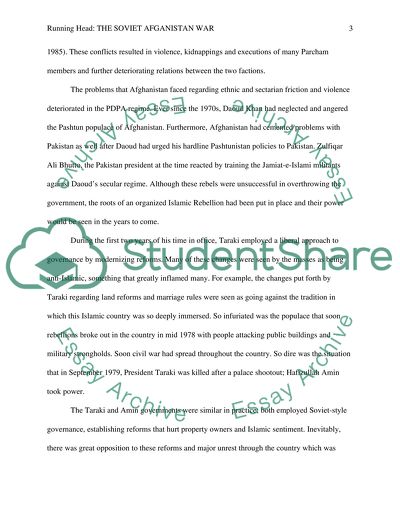Cite this document
(“The Soviet Afghanistan War Research Paper Example | Topics and Well Written Essays - 1750 words”, n.d.)
Retrieved from https://studentshare.org/history/1402122-the-soviet-afghanistan-war
Retrieved from https://studentshare.org/history/1402122-the-soviet-afghanistan-war
(The Soviet Afghanistan War Research Paper Example | Topics and Well Written Essays - 1750 Words)
https://studentshare.org/history/1402122-the-soviet-afghanistan-war.
https://studentshare.org/history/1402122-the-soviet-afghanistan-war.
“The Soviet Afghanistan War Research Paper Example | Topics and Well Written Essays - 1750 Words”, n.d. https://studentshare.org/history/1402122-the-soviet-afghanistan-war.


